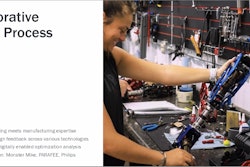Pharmaceutical supply chains can be hard enough to manage for legacy drugs. But for new cell and gene therapies (CGTs), there are many additional complications.
At the 2019 PDA Cell and Gene Therapy Conference this week, Stefanie Brady, Director of Supply Chain at REGENXBIO, explained that with small sporadic manufacturing campaigns, it’s tough to source raw materials. “It’s not once a month, or even once a quarter… campaigns may only take place a few times throughout the year,” she said.
This makes it difficult for CMOs or in-house manufacturing to plan for this demand. “We don’t have a lot of manufacturing capacity, we have a very intricate process to manufacture and these processes aren’t automated. Plus, we need highly skilled workers,” so it’s not easy to transfer manufacturing, explained Brady.
Lead times present challenges
Raw materials for CGTs have long lead times, with plasmids requiring six months or even years. It’s hard for suppliers to know who needs what and when. Adding to the challenge is that these materials are often single-source and expensive.
REGENXBIO uses CMOs for its manufacturing processes. For the company and others like it, to prepare for a trial, they may reach out to CMOs and negotiate when they can get into their manufacturing suites. If one CMO has availability in four months and another cannot manufacture for 12 months, they may opt for the first to meet timelines. But that means they only have four months to get raw materials together.
Controlling raw materials in-house
To boost agility, REGENXBIO brought control of some raw materials in-house so that they could ensure certain supply volumes and quality attributes. This undertaking required a lot of resources, but it’s a strategy that Brady said has paid off.
To start, a multi-disciplinary team performed a risk assessment on all raw materials based on technical, quality and supply chain characteristics across different categories. Factors assessed included manufacturing lead times, impurity risks and product contact status. Materials were placed in high-risk, medium-risk and low-risk categories, and control of high-risk raw materials was brought in-house.
As an example, the cell culture media was identified as a high-risk raw material. The CMO they were working with wanted it in liquid form to avoid the reconstitution process.Though the supplier could provide a liquid medium, it couldn’t be procured on an animal origin free (AOF) line like the powder medium could.
To reduce the quality risk,REGENXBIO worked with the supplier to obtain a specific powder medium to contain mycoplasma testing on the Certificate of Analysis, and found a third party source that could provide reconstitution at an AOF facility. While this adds a level of supply chain complexity and costs a bit more, it meets the company’s stringent quality standards and helps maintain supply.
Benefits of in-house control
Bringing raw material control in-house has been positive. REGENXBIO has materials ready on demand for manufacturing and they have built a strong CMO-supplier-customer relationship.
You might think this causes pushback, but the CMO is pleased to have the arrangement. It helps them schedule REGENXBIO in the manufacturing suite because they know the raw materials will be ready when needed. Brady said, “We recently asked [a CMO] ‘How can we work together better?’ They appreciate that we’re taking this on. We’re coming with the insurance of supply for a lot of raw materials, so they’re more open to giving us a slot in manufacturing. They know we’ll have everything and not be scrambling for materials.”
REGENXBIO is also relying on storage of large volume materials at distribution centers to reduce space constraint issues, which also helps CMOs free up storage space. Brady noted that distribution contracts have helped a lot since they aren’t purchasing all of the raw materials and paying upfront. “Some materials are stored and invoiced at point of distribution. If we over-forecast, and need to offload [some material] due to delays, we know other customers can use it.” This is where having a good relationship with partners comes in handy… a distribution center can reach out ask if REGENXBIO still needs their entire supply if another customer comes up and needs some.
While there is the possibility to redirect some raw materials to other customers, there is risk. A process change can still render a material obsolete, and it could become scrap.
Maintaining the risk assessment
Brady explained that the risk assessment is a live document. As the company grows and learns about processes and supplier capabilities, they feed information back into the risk assessment which helps with supply planning and future risk mitigation and process control strategy.























